LA's Hood Ornament
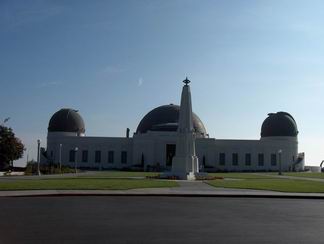
Griffith Observatory re-opened to the public on November 3, 2006, after a renovation project that took nearly five years to complete. It is located in Griffith Park, just north of downtown Los Agneles, on the same side of the Hollywood Hills as the famous Hollywood sign. From its terraces you can look south toward downtown Los Angeles.
The Observatory features a solar telescope as well as a night-time observing telescope, more than 160 exhibits, a planetarium show, a gift shop, and a cafe (with food catered by Wolfgang Puck). It's a must-see for anyone visiting the Los Angeles area, and has one of the most breathtaking views in the world.
The exhibits are housed in both the west and east wings of the main building, as well as in a newly added room that sits below the grassy lawn of the observatory. From the lawn you can see the Hollywood sign, east to Pasadena and the northeast to the San Gabriel mountains. The west view on a clear day lets you see all the way to the shorelines of Santa Monica and Long Beach.
|
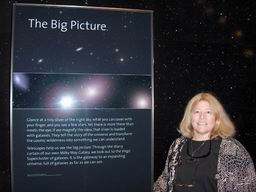
Carolyn Collins Petersen and Big Picture Primary
The Big Picture Primary panel is the main introduction to the Big Picture, an astronomical image that shows an area of sky in the constellation Virgo.
It is accompanied by a number of explanatory panels, telescopes, and a video called "The Depth of Space." In addition to writing the panels, I also wrote the script for the video; the visuals were produced by the Griffith Observatory Graphics Staff and composited and produced (with narration and music) by RBH MultiMedia, of Dobbs Ferry, NY.
|
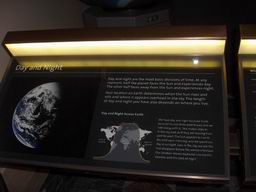
Day and Night
Visitors always want to know things like how day and night occur on our planet. There are six exhibits at Griffith that answer such basic questions.
|
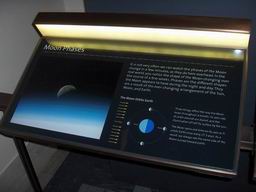
Phases of the Moon
Another key exhibit tackles a commonly asked visitor question: what causes the phases of the Moon?
|
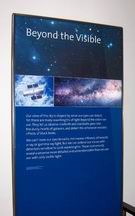
Beyond the Visible
This focuses on wavelengths of light we can and can't see in the electromagnetic spectrum. Each wavelength regime shows us something different about a celestial object.
|
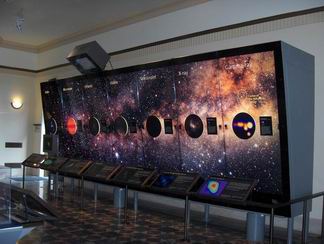
Beyond the Visible Exhibit
Each circular image in this beautiful exhibit is like a window into another part of the electromagnetic spectrum. We wanted visitors to understand not only what things look like in other wavelengths, but how astronomers can use these wavelengths to probe "unseen" regions our eyes could never detect without help.
|
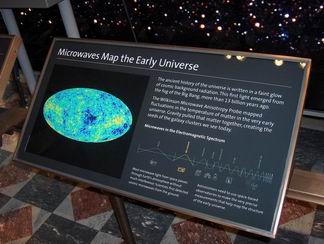
Experiencing Microwave Astronomy
As part of the "Beyond the Visible" exhibit, visitors can see what an object looks like in microwave wavelengths.
|
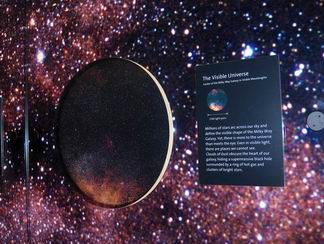
The Visible-Light Universe
The visible-light universe is the most accessible and is our entry into astronomy. It is what humans observed first using our visible-light-sensitive eyes.
|
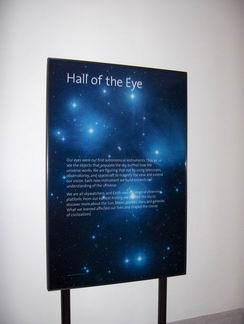
The Hall of the Eye
The introductory panel to the Hall of the Eye, where visitors learn about our earliest astronomical instruments, and how they enhanced our vision and extended our view of the cosmos.
|
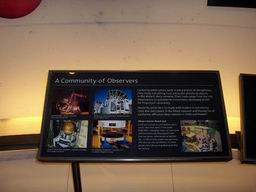
California Astronomers
California is home to a diverse astronomy community, something we celebrate throughout significant parts of the exhibit program.
|
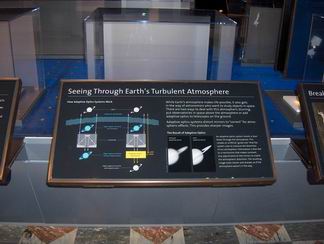
Adaptive Optics exhibit Wayside Panel
Visitors learn about the advances in observing power that today's astronomers get by using adaptive optics systems.
|
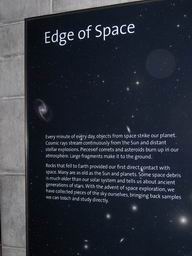
The Edge of Space
The edge of space lies at the top of Earth's atmosphere. Here we first encounter incoming meteors ("pieces of the sky"), the Sun, and the planets.
|
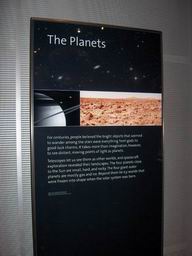
The Planets
The planets of our solar system are spectacularly displayed in a series of beautiful exhibits. This is the introductory overview panel.
|
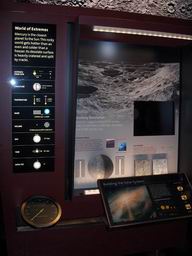
Mercury
Mercury is the closest planet to the Sun and one of the least-explored (along with Pluto) worlds in the solar system. Space artist Adolf Schaller created a space-art view of what it might be like to be on Mercury.
|
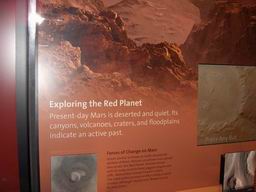
Mars!
Mars has fascinated humans for all our history. This exhibit gives visitors an overview of the Red Planet that we can't get just from gazing at it in the night sky. Adolf Schaller painted the Mars surface scene that gives visitors a small taste of what it might be like to stand on Mars.
|

Visiting Jupiter
Jupiter is the largest planet in the solar system. Its upper cloud decks are depicted here by artist Don Dixon (on the staff of Griffith Observatory).
|
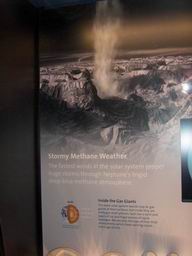
Stormy Weather on Neptune
Neptune has the most extreme weather in the outer solar system. Here we see the planet depicted by artist Adolph Schaller.
|
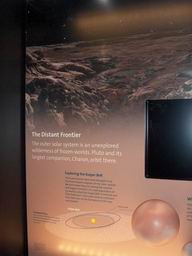
Pluto and Beyond
Pluto continues to fascinate people, and not just because of the saga of its planetary status. Here we visit this icy world in another Schaller painting, and learn more about the outer solar system.
|
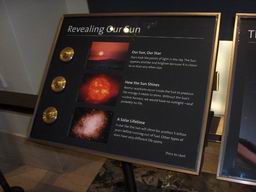
The Sun
The Sun is a star, a fact that surprises many visitors. Several exhibits are devoted to studying our nearest star, including a set of solar telescopes that give "real-time" views of the Sun.
|
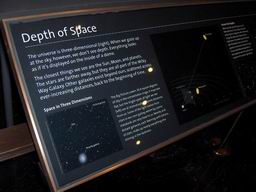
The Depths of Space and Dimensions
It's important for visitors to understand the three-dimensional depth of space.
|
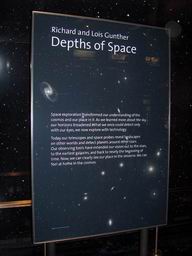
Depths of Space
The exploration of space opened our eyes to the depths and distances in space. It also changed our view of the stars and planets and galaxies.
|
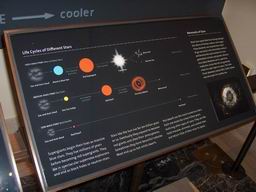
The Lives of Stars
Every star we see in the sky fits into some category that tells us about its life span and evolution. Here, visitors can explore the lives of the stars.
|
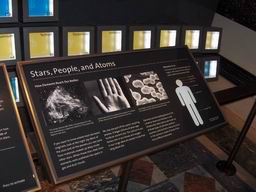
We Come from the Stars
In every sense, we are of the stars. This exhibit shows visitors how and why we are made of star stuff (a theme also developed in the Samuel Oschin planetarium theater show).
|
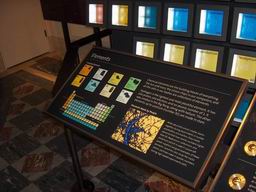
Chemical Elements and the Cosmos
In a sense, the history of the cosmos is also the history of chemical elements that make up all the matter we know. This exhibit takes the visitor on an exploration of elements.
|
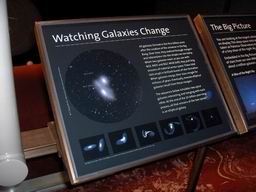
Watching Galaxies Change
Everything in the universe changes. This panel uses the Big Picture to show visitors how galaxies change over time. The Big Picture contains galaxies in many states of evolution and interaction.
|
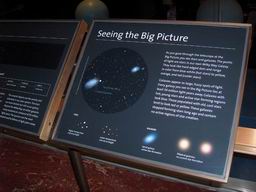
Seeing the Big Picture
Visitors can study the Big Picture with telescopes inside the building. They can see galaxies of different shapes and ages, all in the same image.
|



